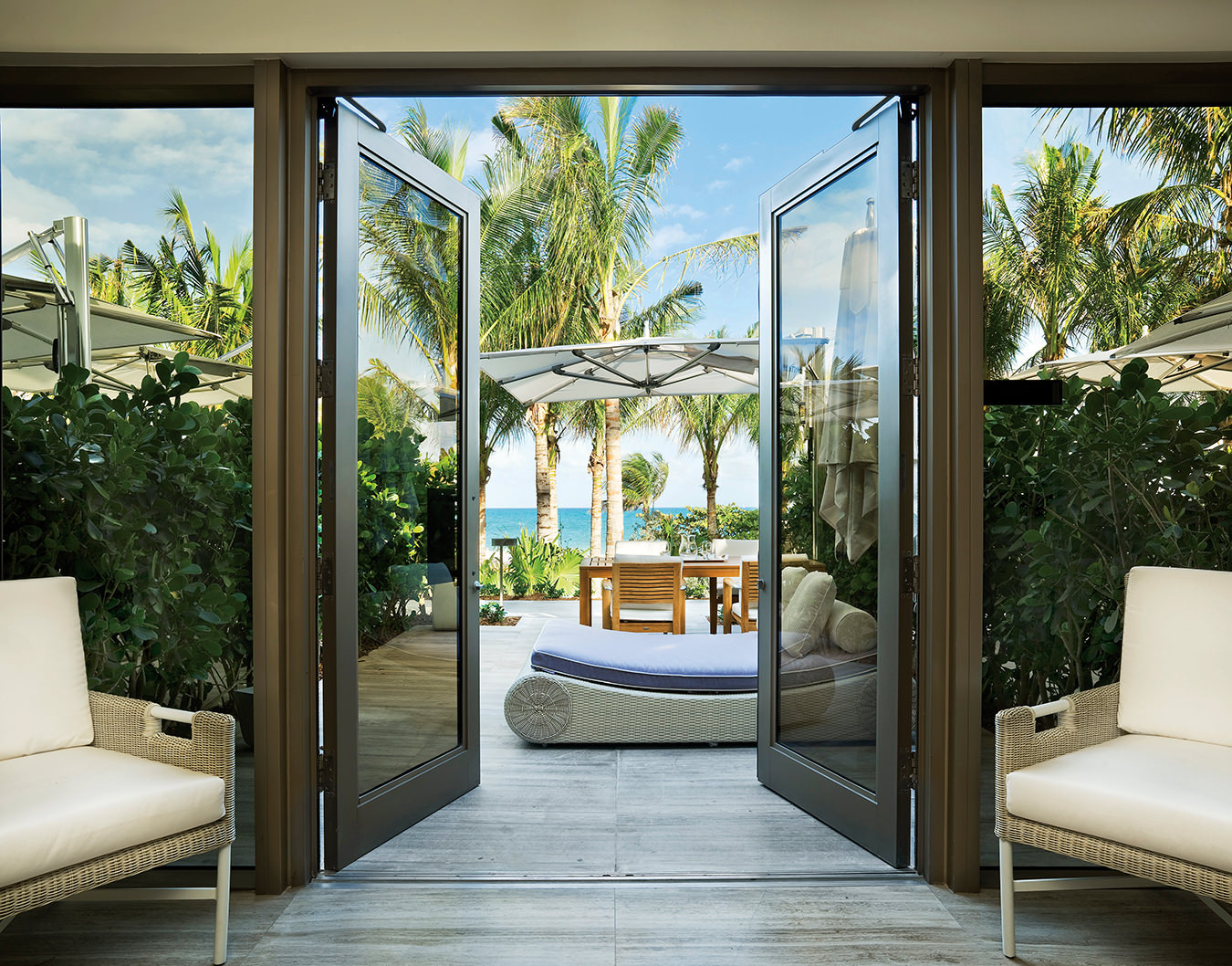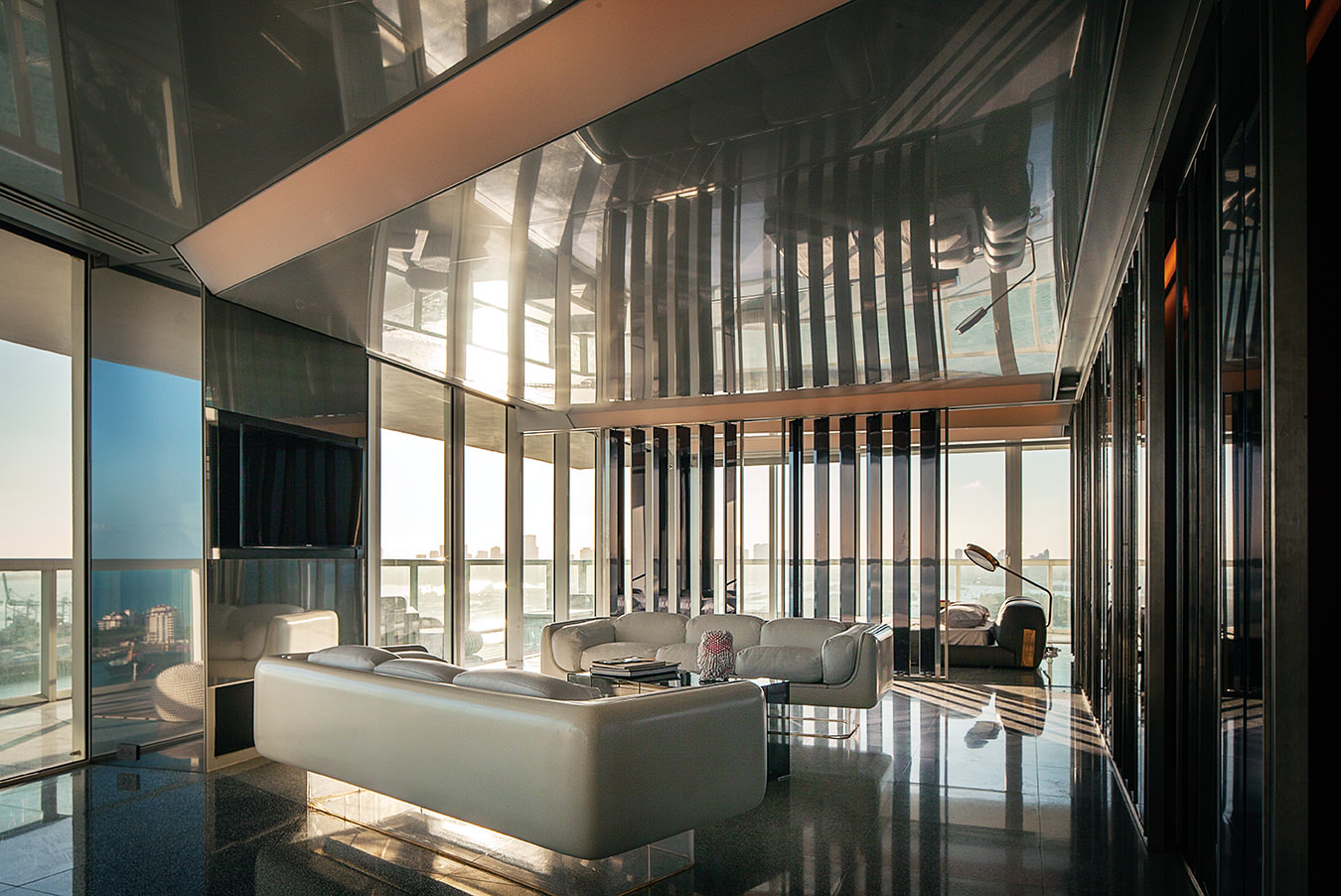-
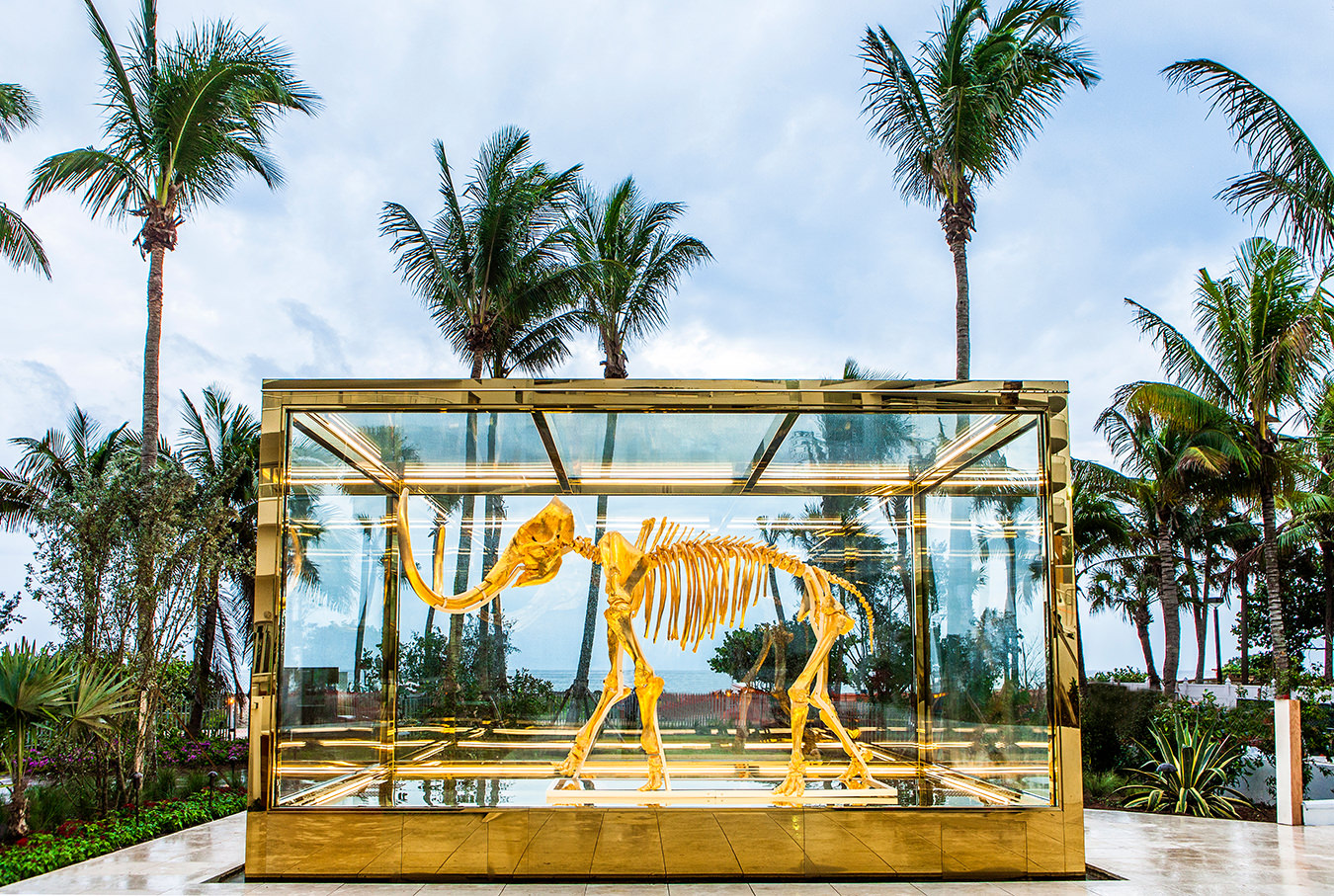
Damien Hirst’s Gone but not Forgotten dominates the gardens at Faena Hotel Miami Beach.
-
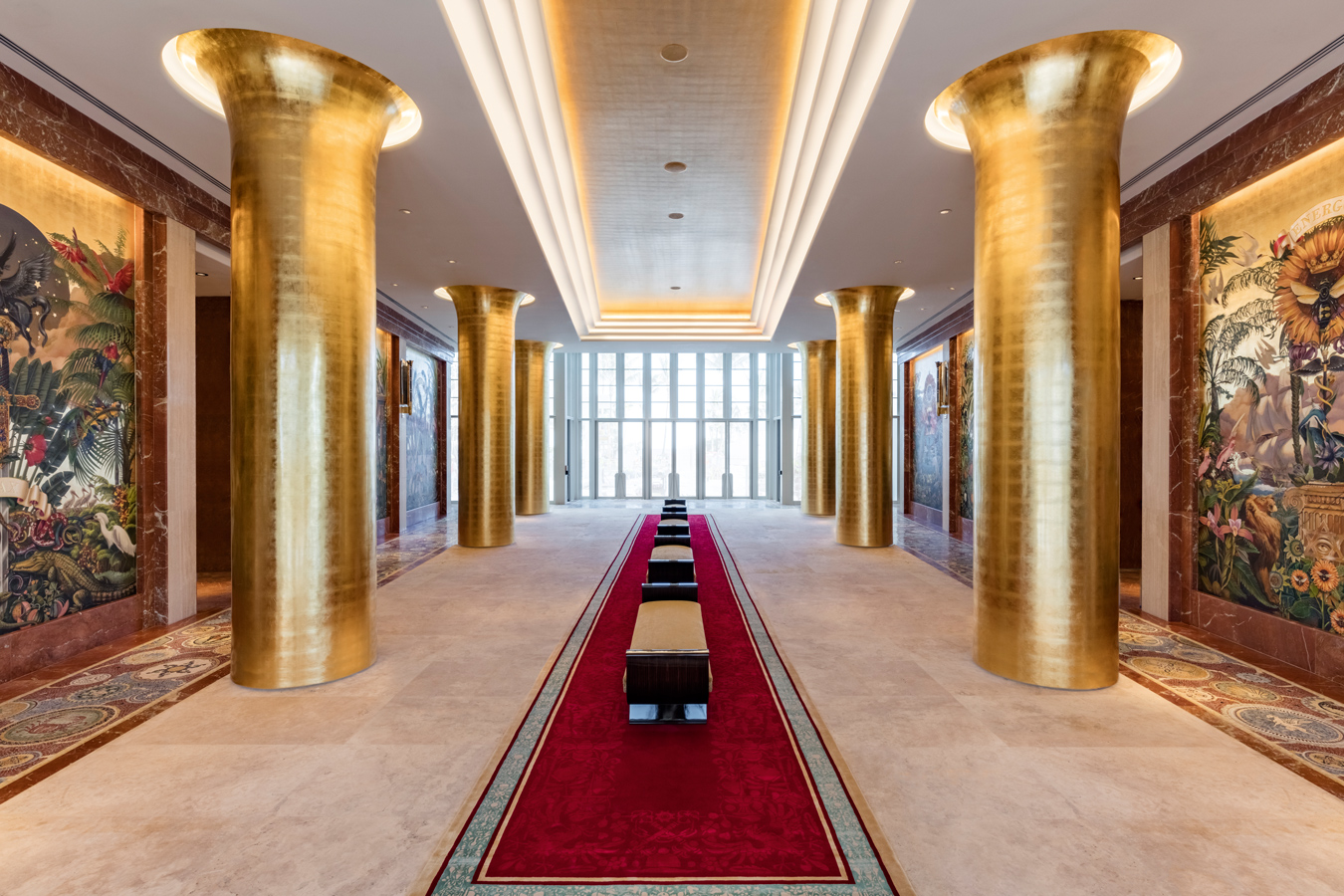
The Cathedral entrance at Faena Hotel Miami Beach. Photo by Kris Tamburello.
-
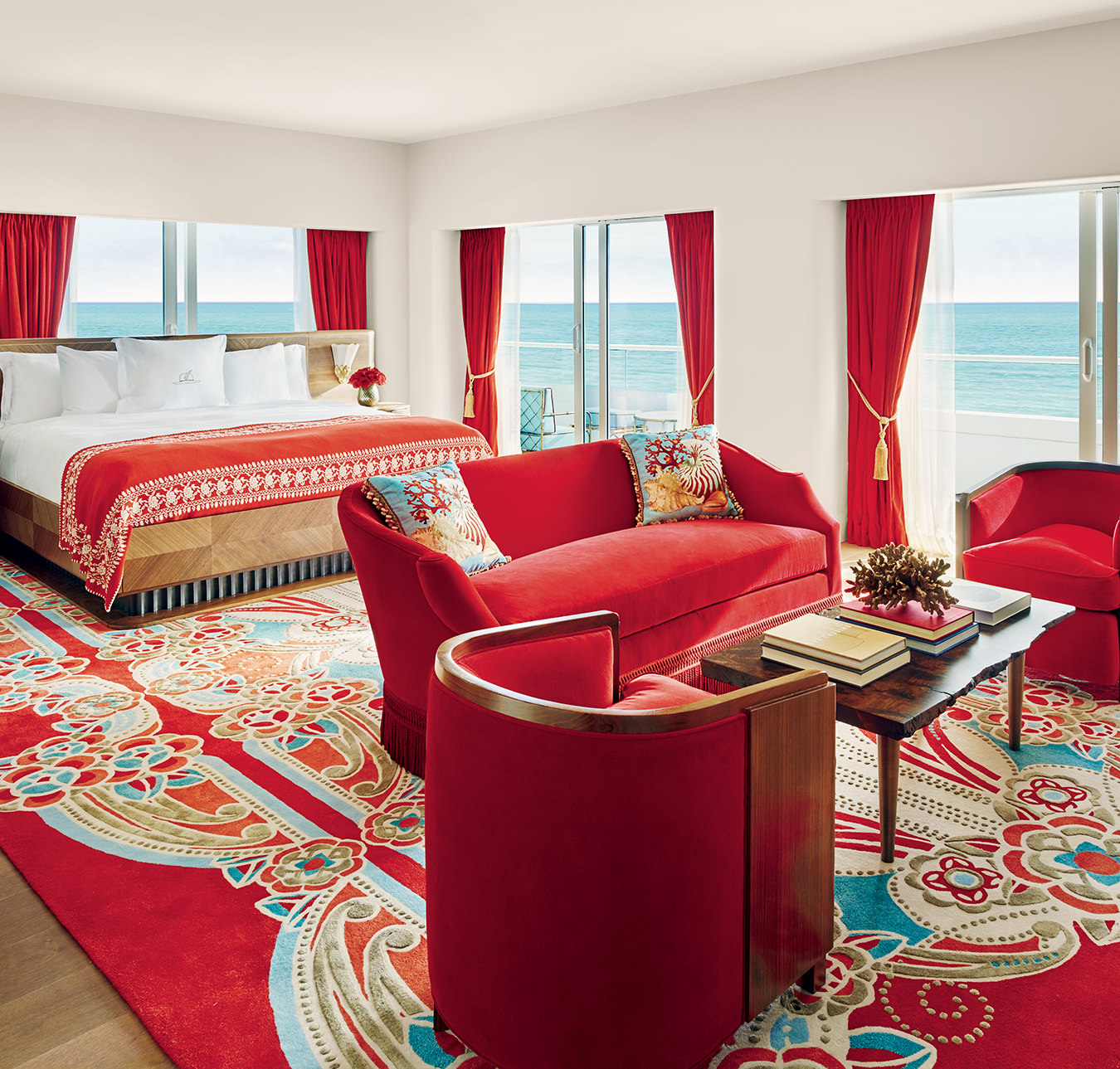
The Imperial Suite bedroom at Faena Hotel Miami Beach. Red is a signature colour throughout the property. Photo by Nik Koenig.
-
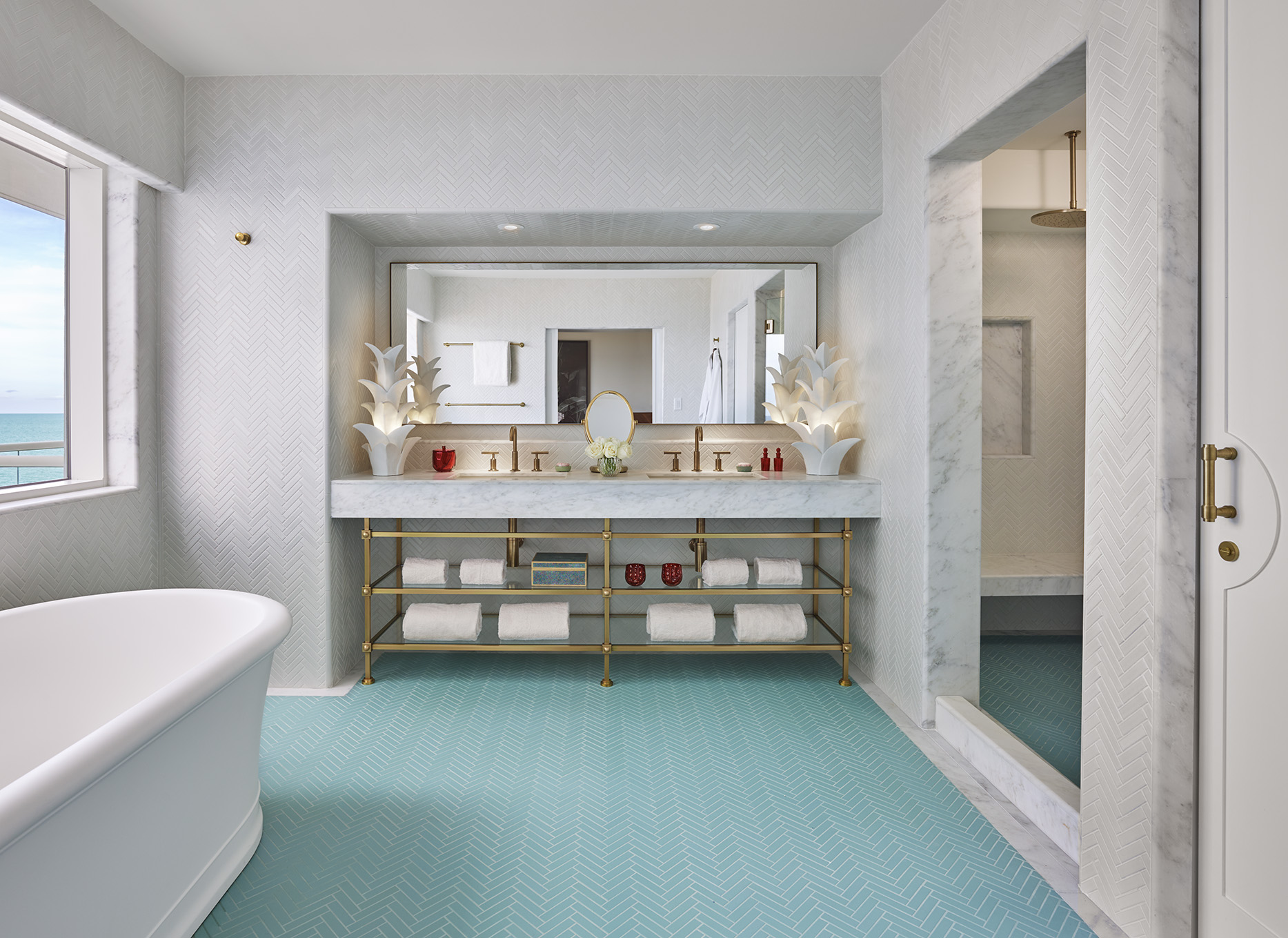
The Faena Hotel Miami Beach bathroom.
-
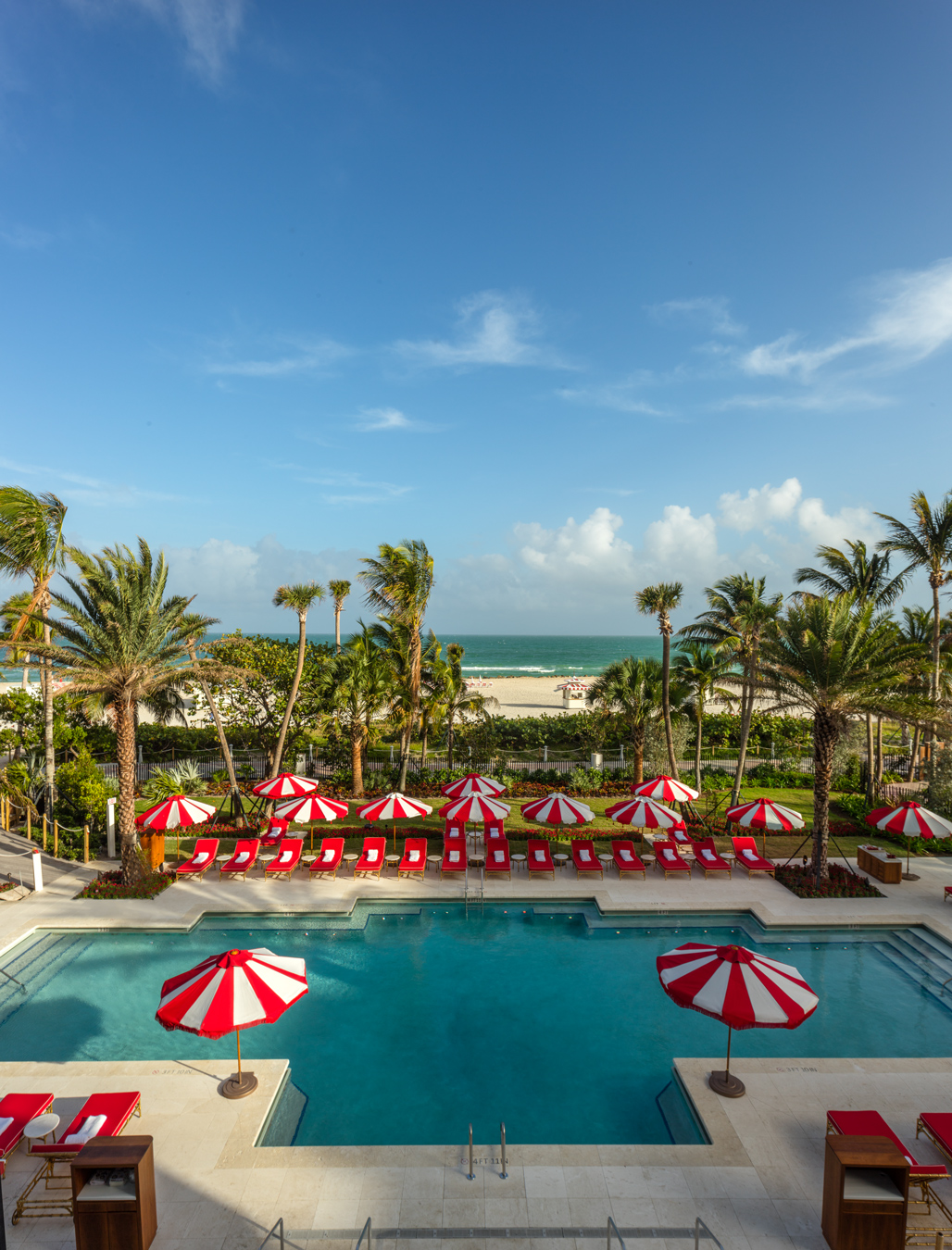
Oceanfront pool at Faena Hotel Miami Beach. Photo by Todd Eberle.
-
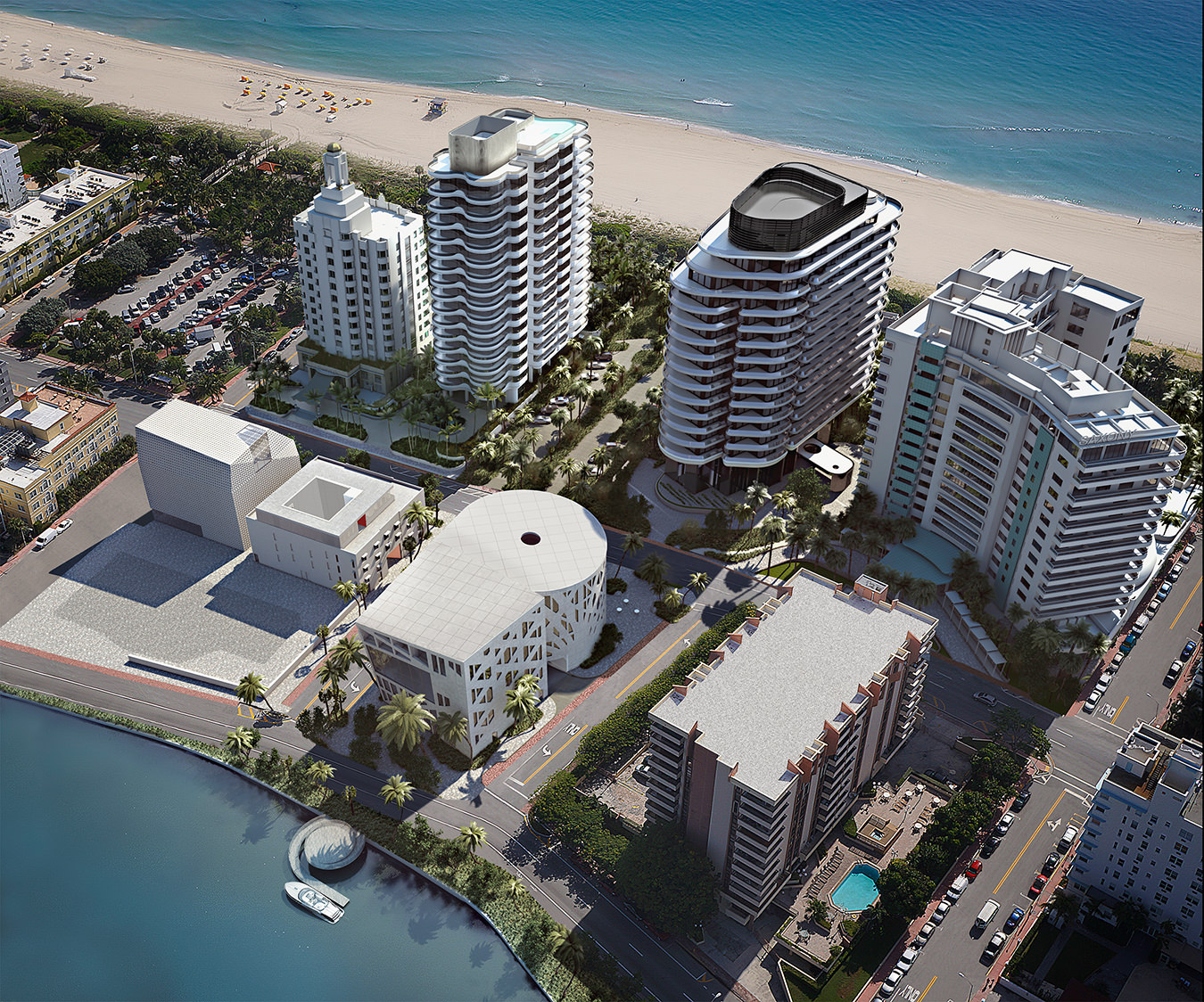
An aerial view of the Faena District, a $1-billion (U.S.) development along the Mid-Beach area of Miami Beach.
-

The Faena Forum, a Rem Koolhaas–designed centre for arts and culture, will be inaugurated this fall. It will host lectures, theatre, art exhibitions and other events.
The Faena District
Transformation Miami.
Alan Faena thinks big. The Argentine real-estate developer and hotelier, known for his uniformly white wardrobe including a white fedora, has master-planned an arts, entertainment, and residential development that spans six city blocks along the Mid-Beach area of Miami Beach to create a utopian city-within-a-city: the Faena District.
An all-star cast of artists and architects have partnered with Faena to realize “a living, breathing community with art, culture, truth, and beauty at its core,” says the self-described urban alchemist. Starchitects Rem Koolhaas and Norman Foster, film director Baz Luhrmann and his wife, Academy Award–winning costume designer Catherine Martin, have all been enlisted in the $1-billion (U.S.) development.
The massing of the architecture on either side of Collins Avenue (the main drag of Miami Beach), stretching from the Atlantic Ocean to Indian Creek, consists of Faena House, a 44-unit beachfront tower designed by Foster + Partners (the penthouse sale set a new record in Miami with the $60-million closing); Faena Versailles Classic, designed by William Sofield, and Faena Versailles Contemporary, designed by Brandon Haw, two more residential towers; Faena Forum, a Rem Koolhaas–designed centre for arts and culture to be inaugurated this fall; and Faena Bazaar, a luxury shopping centre with the feel of a modern-day souk, also designed by Koolhaas/OMA. The anchor of the newly minted Faena District (the only neighbourhood to be given “District” designation in Miami Beach besides the Art Deco Historic District in 1979) is Faena Hotel Miami Beach, the restored historic Saxony Hotel, which opened ceremoniously during Art Basel Miami last December.
The Faena District is a utopian city-within-a-city.
Built in 1948, the Saxony—which hosted Hollywood royalty Marilyn Monroe and Frank Sinatra—was the first luxury property to grace Miami Beach. The new Faena Hotel’s style is a dramatic Louis XIV meets Miami Beach. The 169-key hotel is the interpretation of the husband-and-wife team of Luhrmann and Martin (otherwise known for making movies like The Great Gatsby) and provides touches of theatre throughout. (Of the selection of Luhrmann and Martin, Faena has been noted of saying: “So that everyone can feel like they are the star of their own movie.”) The grand Cathedral is a soaring entry hall—there is no formal lobby—adorned with dramatic gold columns and eight specially commissioned murals (inspired by episodes in Faena’s own life) by artist Juan Gatti. The guest rooms encapsulate grandeur with a vibrant decor of signature Faena red (including velvet sofas) and robin’s egg blue–tiled bathrooms. Plenty of wood-grain furnishings and art deco lighting are used as accents.
As a guest, one feels part of some whimsical storyline. Faena Hotel Miami Beach is an imaginative fantasia of vignettes collectively executed to sublime effect. The Living Room is Miami’s take on a Bengal lounge, with tigers, a good deal of tiger print, and a show-stopping chandelier by Alberto Garutti that is attuned to the weather in the Pampas of Argentina and flickers in time with lightning if there is a storm a continent away. There is even a taxidermy peacock in the library. The outdoor Los Fuegos restaurant, overseen by Argentine chef Francis Mallmann, centres on asado, a traditional communal meal of beef and sausages grilled over an open flame; nearby, Damien Hirst’s 24-karat gilded woolly mammoth skeleton sculpture Gone but not Forgotten, encased in four layers of hurricane-proof glass, presides (prime Instagram bait). At Pao restaurant guests can dine on modern Asian cuisine with another Hirst keeping watch: Golden Myth, a gilded bronze unicorn on a golden plinth with an anatomical cross-section revealing the taut sinews and musculature of a horse. Faena Playa is the beach playground where fringed umbrellas shelter chaise longues and one need only raise a red letter F flag for seaside service (including a wash of sand from your feet). The Tierra Santa Healing House spa offers South America–inspired and shaman-developed treatments, while the Faena Theater shows nightly cabaret-style revues.
Faena’s aim with the Faena District (the multi-act project will be all completed by next year) is to transform Miami Beach into a world-class cultural capital. He has built it. Now, will they all come? The glitterati have already.
Originally published July 22, 2016.

